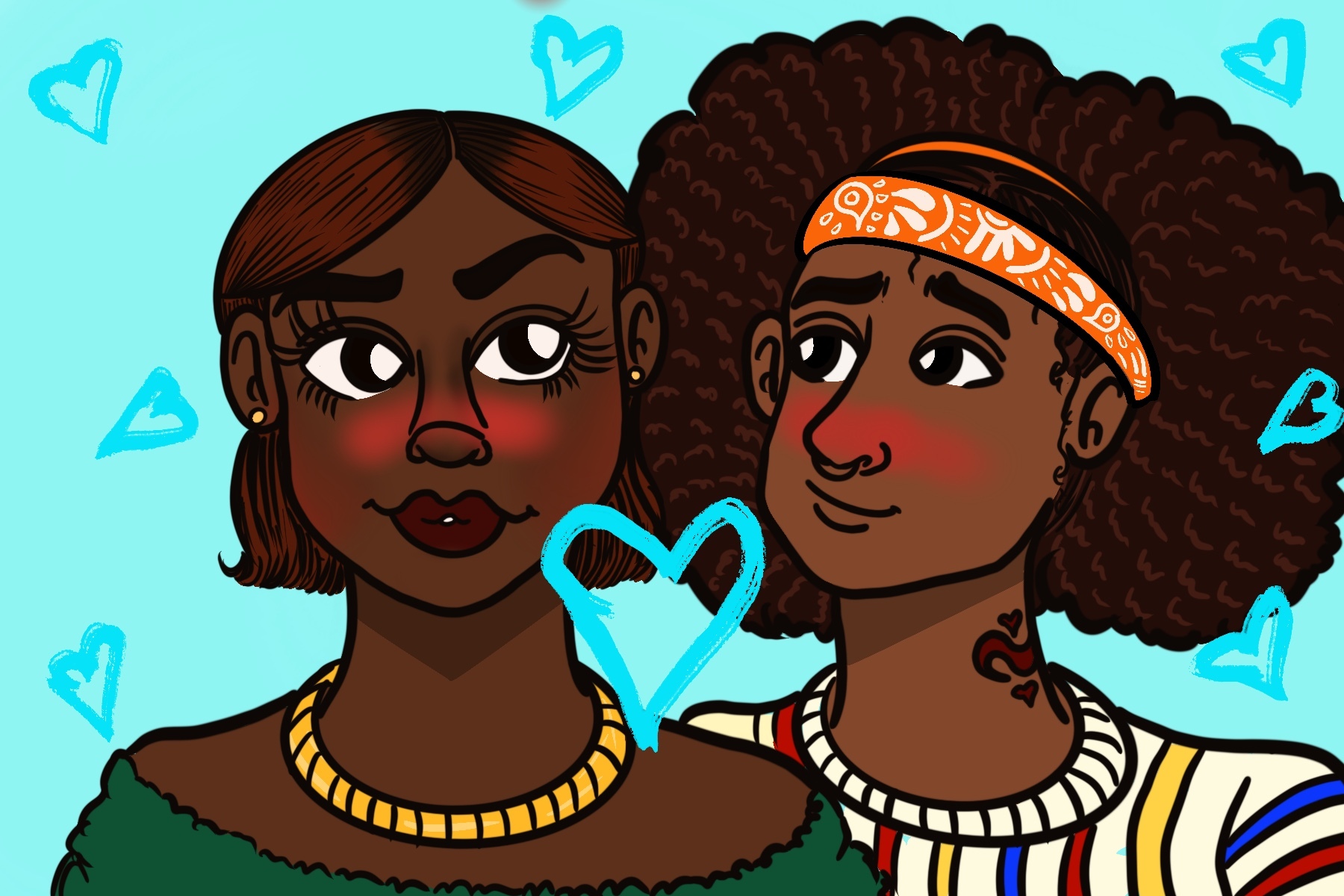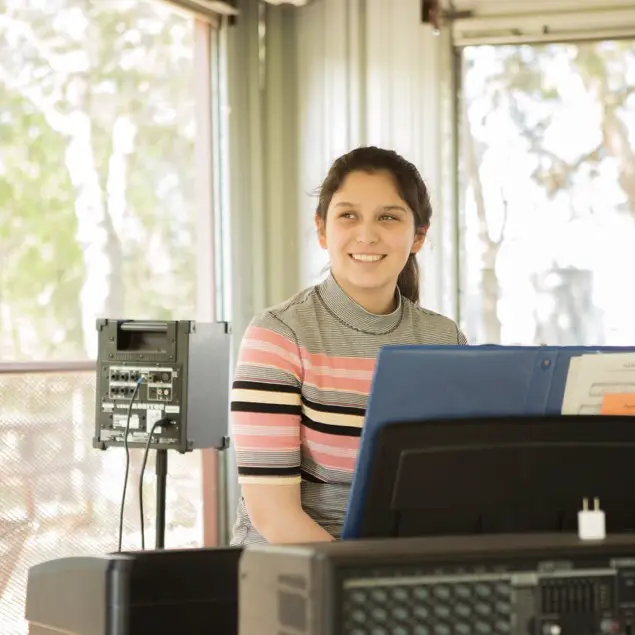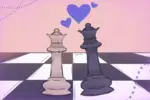When crafting a story, there are dozens if not hundreds of plots, themes and tropes to choose from. Genres range from young adult to science fiction, but only one transcends its own category by being so versatile it can be combined with any other genre: romance. While romance on its own has a massive catalog of literature, films and TV shows, it’s the many different types of stories that it can tell that makes it so versatile. Here are the top five romantic tropes:
5. The “Soul Mate” Trope
The first on this list of romantic tropes is the idea of soul mates — a couple destined to end up together in a story. Often the pair are fated to find one another no matter what trials or troubles are thrown at them.
The 2017 novel “The Seven Husbands of Evelyn Hugo” features a soulmate bond, and while the title aptly implies the main character has seven husbands, the central romance of the novel is between Evelyn Hugo and Celia St. James. Both actors, the two meet through a film adaptation of “Little Women,” where Evelyn is initially jealous of Celia’s talents.
Following a series of events, the two confront their feelings for each other and maintain a bond in the suffocating world of old Hollywood. When asked who the real love of her life is, Hugo admits to her feelings about St. James: “I feel like I spent my entire life loving her.”
The relationship between characters Chihiro and Haku from the 2001 Studio Ghibli film “Spirited Away” is another example of the soulmate romantic trope. Following the abduction of her parents within the spirit world, Chihiro meets Haku. This pair is much more mystical than Evelyn and Celia, with Chihiro admitting to feeling as if she’s known Haku her entire life. As Chihiro struggles to survive in the spirit world, a gravely injured Haku must embark on a journey to save her.
Upon his recovery, Chihiro learns Haku’s true identity: He is the water spirit who saved a young Chihiro after she fell into a river trying to retrieve her shoe. Although the couple is not as traditional as some others on this list, the two promise each other to reunite after the events of the film.
4. The “Slow Burn” Trope
This one certainly requires more patience compared to the other romantic tropes on this list. It is the “slow burn,” a trope in which two characters meet and then slowly drift together as their story progresses.
On television, one of the most prominent examples of a slow burn is in the show “Parks and Recreation,” between main characters Leslie Knope (Amy Poehler) and Ben Wyatt (Adam Scott). The pair first meet at the tail end of Season 2 and are initially at odds when Knope tries to keep Wyatt from slashing the budget of the parks department.
As the show progresses, the two learn to work together. Following a series of ups and downs in their relationship, which includes an ethics trial, the characters marry and have a set of triplets after three seasons of buildup.
Television makes for an excellent medium for a slow-burn relationship, seen also with Eleven (Millie Bobby Brown) and Mike (Finn Wolfhard) from “Stranger Things.” The couple first met at the beginning of the show, when Mike and his friends find Eleven in the woods while looking for Will (Noah Schnapp). Eleven joins their party and a young romance blossoms between her and Mike.
While the first season ends when Eleven goes missing, both remain hopeful in their feelings for one another as they find their way back to each other. While the two split up during the third season of “Stranger Things,” the ending promises to reunite the pair in the upcoming fourth season.
3. The “Love Triangle” Trope
Possibly one of the most polarizing romantic tropes in entertainment is the “love triangle,” in which a couple faces trouble when a third party pursues one of them. Readers and viewers can’t help choosing sides in a love triangle, especially in the following examples.
The first comes from the young adult series “The Hunger Games,” with characters Katniss, Peeta and Gale. Although Katniss and Peeta begin their relationship as a way to survive the horrific title event, Gale has immense feelings for Katniss and shows it by taking care of her mother and sister while she is in the games.
Although the series ends with Katniss marrying and starting a family of her own with her game mate Peeta, Gale’s character provides the story with another love interest the audience can debate over. However, this love triangle pales in comparison to the next example.
Some may call them the blueprint for love triangles, but Bella, Edward and Jacob of the “Twilight” saga deserve more credit for their influence. Not only is the love triangle between a human, a vampire and a werewolf, but the film adaptations of Stephanie Meyer’s romance novels created one of the first pop culture wars.
Even a fast-food chain like Burger King aimed to capitalize on the fandom war by offering prizes from scratch-offs that featured the faces of Edward and Jacob. Since the film’s debut on Netflix and a prequel published by Meyer, social media has gained a new appreciation for the execution of this love triangle.
2. The “Friends to Lovers” Trope
Although it is one of the easier romantic tropes to execute in a film or book, the trope of friends to lovers, whether they be children or adults, is much more substantial than it seems. When a couple begins as friends, there is a more innocent understanding of each other and how they can fit into each other’s lives. The trope is also, along with maybe the “slow burn,” the one that reflects real-life couple trajectories the most.
Childhood friend to adult lover is one sub-trope within “friends to lovers,” with one of the best examples being Elizabeth Swan (Keira Knightly) and Will Turner (Orlando Bloom) from “Pirates of the Caribbean.” The pair meet when they are adolescents and the ship carrying Swan encounters a shipwreck. Floating from the disaster on a pallet of wood is Turner, who looks to be the same age as Swan.
Having saved his life, Elizabeth befriends Will, and the two begin a friendship that lasts until their young adult years when they finally realize their feelings for one another. It is not until the third film, “At World’s End,” that the pair get married in a tumultuous maelstrom surrounded by enemies.
Another example of the “friends to lovers” romantic trope comes from the show “Glee.” After meeting at an all-boys school in Season 2, characters Kurt (Chris Colfer) and Blaine (Darren Criss) become instant friends with a romance on the horizon foreshadowed by the two running through the halls of Dalton Academy.
Because Kurt came to Dalton as a result of bullying and harassment at his old school, he finds comfort and solace in the company of Blaine. Kurt eventually finds his way back to Lima High School, and with a newfound confidence, stands up to his bully. Blaine ends up transferring as well, and the two finally get together.
1. The “Enemies to Lovers” Trope
The romantic trope of “enemies to lovers” is as enticing as the name suggests. It is a trope that defies the reader’s expectations of a protagonist and antagonist by creating a world where the two characters end up together. Across novels, films and television, romantic tropes like these are bound to reel in fans who just can’t look away.
Following the Season 2 release of Netflix’s “Bridgerton,” the internet exploded with appreciation for its “enemies to lovers” trope. The season is based on Julia Quinn’s “The Viscount Who Loved Me,” and it follows Anthony Bridgerton (Jonathan Bailey) as he quarrels with his fiancée’s sister, Kate Sharma (Simone Ashley). Throughout the season, both Kate and Anthony suppress their feelings for the sake of their families’ reputations, creating tension each time they are in a room together.
While some characters are not as easily fooled, Kate’s sister Edwina (Charithra Chandran) is heartbroken when she discovers her sister’s secret feelings for the viscount and breaks off their engagement. Although coming to terms with their feelings is tedious in their social climate, Kate and Anthony end up together as viscount and viscountess.
One of the earliest novels that uses the “enemies to lovers” trope is Jane Austen’s 1813 novel, “Pride and Prejudice.” Following the story’s entrance into the public domain, many iterations of the relationship between Elizabeth Bennet and Fitzwilliam Darcy have been told, including a modern retelling that’s filled with zombies. When they first meet, Darcy appears to feel no attraction toward Elizabeth and insults her at a public dance.
Lizzie’s wit is a match for Darcy’s callous nature and as the story progresses, the two must reluctantly confront their feelings for each other. Their romance ends with Darcy admitting that his feelings for Lizzie have existed the entire time.

















